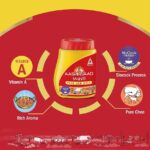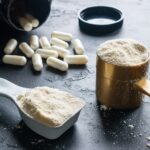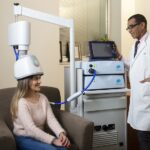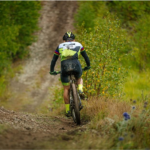Introduction
The question supposes that there were indications for surgery “before” and that it is possible that the situation has changed, evolving towards a reduction or disappearance of the indications.
It is certain that anti-reflux surgery was an essential therapeutic method in cases of severe or complicated esophagitis before the appearance of anti-secretory drugs, but the availability of anti-H2 drugs to doctors, then, and above all, inhibitors of proton pump (PPI) has completely changed the possibilities of medical therapy, eliminating large junctional ulcers responsible for severe bleeding or chronic peptic stenosis.
At the beginning of the 90s of the last century, anti-reflux surgery performed by laparotomy was very rarely performed in France. The results of this surgery were in fact no better than treatment with PPI at an appropriate dose [1] and the surgical treatment obtained disappointing results taking as a criterion of judgment, the discontinuation of anti-secretory drugs and the prevention of Esophageal adenocarcinoma in the long-term evaluation of the Spechler trial [2].
The possibility of performing an anti-reflux surgery by laparoscopy led to the rapid development of this type of intervention with a peak of 4600 laparoscopic fundoplications in 2000. This is a paradoxical situation, as it is commonly accepted in surgery that an approach does not justify an indication for surgery. It is not necessary to operate on asymptomatic cholelithiasis, even if laparoscopy makes it possible to perform cholecystectomy with shorter, less painful postoperative course and shorter hospital stay compared to laparotomy. In the case of fundoplication, it is clear that it is the laparoscopic approach that has led to this inflation of operative indications, the argument most often heard by patients being “why do you want to continue taking a drug all your life when you can be rid of your disease PERMANENTLY in 24 hours?”. Indeed, one wonders why…
However, the goal assigned to surgery in the case of GERD is a difficult goal since it involves the restoration of a function (restoration of the anti-reflux barrier while preserving the oesogastric functions) and not the simple removal of an organ or tumour. The goal is all the more difficult to achieve as the physiopathologies of GERD and reflux esophagitis are complex and still imperfectly known. The medical treatment by PPI has no physiopathological claim and is content to annihilate the aggressive character of the refluxate. The search for “antireflux” drugs, essentially aimed at reducing the number of transient relaxations of the lower oesophageal sphincter, has not currently resulted in any molecule that can be used in practice.
Before attempting to answer the question posed, reference can be made to the reference text on the management of GERD in adults, namely the recommendations of the 1999 Franco-Belgian consensus conference [3]. Three recommendations concern surgery in therapeutic strategies (question 5).
Long-term treatment apart from complications
“Frequent or early relapses on discontinuation of treatment, affecting quality of life, require maintenance treatment with PPIs at appropriate doses. It is in these cases of dependence on medical treatment that surgery may be considered”. Details are given in question 4 (what are the results of the surgical treatments?). “The choice between continuing prolonged medical treatment and surgery is difficult pending prospective controlled studies being published or being carried out. The clinical context (comorbidity, risk factors, age) and the informed choice of the patient are the main elements that must be involved in the decision. The jury recalls that the better acceptability of the laparoscopic approach should not modify the indications for the surgical treatment of GERD”.
– Complications: stenoseptic “surgical treatment is only discussed in the event of failure of medical treatment”.
– Complications: endobrachyoesophagus “long-term anti-secretory drugs and surgery do not make it possible to completely regress intestinal metaplasia, nor to prevent the appearance of dysplasia or cancer”.
What are the results of medical treatment in GERD and reflux oesophagitis?
The Cochrane Collaboration [4-5] provides valuable meta-analyses to calculate the relative risk of cure with PPI treatment versus placebo. In fact, the natural history of the disease and/or the placebo effect always leads to healing in a varied percentage of cases (the main criterion can be objective = healing of the esophagitis or subjective = disappearance of heartburn). The results of PPIs are better in the event of severe lesions linked with certainty to GERD (severe esophagitis), the difference with the placebo diminishing when the diagnosis is made with less certainty (non-erosive reflux, extra-digestive manifestations of reflux) .
» Esophagitis
– In the case of oesophagitis, only 4 PPI trials versus placebo are available, with healing of the oesophagitis as the main endpoint. The placebo effect was 22%, the additional effect of PPIs 51%. The number needed to treat (NNT) is therefore 2 (95% CI: 1.5-2.9). It is therefore sufficient in this situation to treat 2 patients to cure one of them solely because of the medicinal effect.
– Long-term treatment: the risk of recurrence of esophagitis after one year is close to 75% with placebo. With a standard dose of PPI, the relative risk of relapse is 0.26 (95% CI: 0.19-0.36). With half a dose, the relative risk of relapse is 0.46 (95% CI: 0.380.57). The NNT for the maintenance treatment of esophagitis therefore varies between 1.5 and 2 depending on the dosage of the PPI.
» Non-erosive reflux
– For heartburn relief, the relative risk of cure with PPIs versus placebo is 0.68 (95% CI: 0.59-0.78). The NNT is between 3 and 4.
– For maintenance treatment, there is only one controlled trial with omeprazole 10 mg/day versus placebo with a relative risk of 0.4 (95% CI: 0.29-0.57). Trials of on-demand treatment of non-erosive reflux in patients responding to an initial treatment of 4 weeks use dropouts due to bothersome heartburn as the primary endpoint despite rescue therapy (antacid) at 6 months. The differences with the placebo are between 10 and 20% and the NNT in this situation can be estimated between 5 and 10.






Leave a Reply